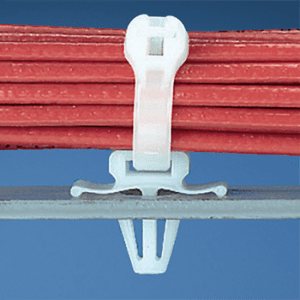- WhatsApp: 8613777772066
- Email: [email protected]
We use cookies to improve your browsing experience. By continuing to use this website, you agree to our use of cookies.
Accept All | Decline AllCable ties are an affordable and versatile fixing tool that is widely used in homes, offices and industrial locations. With its simple design and easy operation, it can be fixed with just one pull and is suitable for bundling and organizing all kinds of wires, cables and pipes. Made of high-strength nylon material, the cable ties are characterized by abrasion, corrosion and UV resistance, ensuring long-lasting use in various environments and not easy to break. A variety of colors and sizes are available, allowing you to apply them flexibly according to your specific needs and improve work efficiency. Whether it is for cable management, fixing objects or simple repairs, cable ties are a powerful assistant in your daily life and work.

Source: BOESE
Table of Contents
ToggleBefore diving into the steps for securing cable ties, it’s essential to understand the different types of cable ties available:
Securing cable ties might seem straightforward, but achieving optimal results requires mastering some basic steps and techniques:
1. Select the Appropriate Cable Tie
Choose the right type and size of cable tie based on the specific application environment and requirements. For instance, use stainless steel cable ties for outdoor or high-temperature environments, and reusable cable ties for cables that need frequent adjustments.
2. Prepare the Cables or Items
Before securing the cable ties, organize the cables or items to be bundled. Ensure they are neatly arranged without crossing or twisting to ensure even force distribution when the cable tie is tightened.
3. Thread the Cable Tie
Insert the tail end of the cable tie through the head’s locking mechanism to form a loop. Place the cables or items within the loop and pull the tie tight, ensuring it sits snugly against the surface of the cables or items.
4. Tighten the Cable Tie
Pull the cable tie tight to ensure a secure hold. For larger bundles, consider using a cable tie gun or similar tool to tighten the tie without damaging the cables.
5. Trim Excess Length
After securing the cable tie, use scissors or a cable tie cutting tool to trim the excess length. Be careful not to cut too close to the lock, as this could compromise the tie’s effectiveness.
In addition to the basic steps, there are several tips that can help you use cable ties more effectively:
1. Use Multiple Cable Ties for Large Bundles
For thicker or longer cable bundles, combine multiple cable ties. Connect several ties together to form a larger loop, ensuring better security for the cables.
2. Leave Some Slack
When securing cables, avoid pulling the cable ties too tight. Leave a bit of slack to prevent the cables from being crushed or damaged. This is especially important for data cables, as overly tight ties can affect signal transmission.
3. Use Labeled Cable Ties
For situations requiring marking and identification of cables, use labeled cable ties. These allow easy labeling of each cable’s purpose and connection point, facilitating subsequent maintenance and management.
4. Use Hook and Loop Cable Ties
For temporary securing or cables that need frequent adjustments, opt for hook and loop cable ties. They are easy to remove and reattach, making them suitable for temporary setups or frequently moved equipment.
Though cable ties are robust and durable, they still require some maintenance and care over time:
1. Regular Inspections
Regularly check the tightness of cable ties, especially in environments subject to vibration or frequent movement. Replace any loose or damaged ties promptly.
2. Avoid Overstretching
Avoid overstretching cable ties during use, particularly nylon ties. In high-temperature environments, nylon ties may become brittle and break if overstretched.
3. Proper Storage
Store unused cable ties in a dry, cool environment away from direct sunlight and high temperatures to prolong their lifespan.
Beyond traditional bundling and securing applications, cable ties can be used in various innovative ways:
1. Home Organization
Cable ties can be used for various organizational and securing tasks at home, such as bundling flower stems, securing curtains, and organizing kitchen utensils.
2. Outdoor Activities
In outdoor activities, cable ties can be used to secure tents, bundle luggage, and hang lights, providing convenient solutions.
3. DIY Projects
Cable ties are also useful in DIY projects, such as making accessories, securing models, and more, allowing for creativity and imagination.
Yes, you can secure electrical cables with cable ties. Use plastic cable ties specifically designed for electrical applications, as they are non-conductive and safe for use with wiring.
Want To Explore More Quality Cable Ties?
Email:
[email protected]Phone:
+8613777772066Location:
NO.66,ZHONGFANG ROAD,ZHONGFANG INTELLIGENT ZONE,BEIBAIXIANG TOWN,YUEQING,WENZHOU,ZHEJIANG ,CHINA 325600
Privacy Policy | Sitemap
Copyright BOESE Co.,Ltd SUPPORT BY :JUNJ